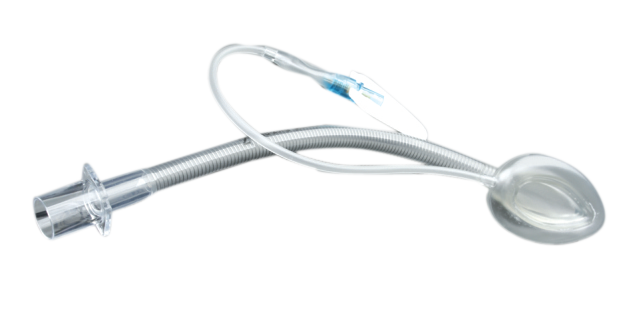
Disposable Reinforced PVC Laryngeal Mask
Laryngeal masks are an important tool for anesthesia and critical care physicians. They are inserted through the mouth and pass over the larynx, sealing around it so that ventilation can be done without intubation. This article will discuss the different types of laryngeal masks, their advantages and disadvantages, and when they should be used.
| Ref. No.: | Size: | Applicable people | Qty. Cs: |
|---|---|---|---|
| NMR104236 | 1.0 | <5kg | 10 |
| NMR104237 | 1.5 | 5-10kg | 10 |
| NMR104238 | 2.0 | 10-20kg | 10 |
| NMR104239 | 2.5 | 20-30kg | 10 |
| NMR104240 | 3.0 | 30-50kg | 10 |
| NMR104241 | 4.0 | 50-70kg | 10 |
| NMR104242 | 5.0 | >70kg | 10 |
Laryngeal masks are an important tool for anesthesia and critical care physicians. They are inserted through the mouth and pass over the larynx, sealing around it so that ventilation can be done without intubation. This article will discuss the different types of laryngeal masks, their advantages and disadvantages, and when they should be used.
A laryngeal mask is a medical device that is inserted into the patient's mouth and nose to protect their airway during certain medical procedures. The mask is made from a soft, pliable material that covers the nose and mouth, and is held in place by a strap that goes around the head. The laryngeal mask has a tube attached to it that goes down the throat and into the lungs, and this tube is connected to a ventilator. The purpose of the laryngeal mask is to keep the airway open so that the patient can breathe, and to protect the lungs from any liquids or secretions that may come up from the stomach.
Laryngeal masks come in a variety of shapes and sizes to suit different patients. The most common type is the disposable reinforced PVC laryngeal mask, which is designed for use in general anaesthesia. This type of mask has a cuff that is inflated with air to seal around the patient's larynx, and a tube that connects to the anaesthesia machine. Other types of laryngeal masks include the silicone laryngeal mask, which is reusable and can be used for a variety of procedures, and the fibre optic laryngeal mask, which is used for procedures that require a clear view of the vocal cords.
There are many benefits to using disposable reinforced PVC laryngeal masks, and we'll explore some of them here. Perhaps the most obvious benefit is that they're disposable, so there's no need to worry about sterilization or cross-contamination. They're also relatively inexpensive, and since they're designed for single use, there's no need to worry about maintenance or repairs. Additionally, disposable reinforced PVC laryngeal masks offer a high degree of comfort and safety for both patients and medical professionals. The reinforced construction helps to ensure a proper fit, and the soft, pliable material is gentle on the delicate tissues of the larynx. Disposable reinforced PVC laryngeal masks are an excellent choice for a variety of medical procedures, and we hope you'll consider them for your next procedure.
A laryngeal mask is a medical device that is inserted into the patient's throat to keep the airway open during anesthesia or surgery. The disposable reinforced PVC laryngeal mask is made of soft, pliable PVC and has a reinforced
latex cuff that is attached to the mask. The mask has a rounded, blunt end that is inserted into the patient's mouth and a pointed end that goes into the patient's throat. The cuff is inflated with air to create a seal around the
patient's throat.
To use the disposable reinforced PVC laryngeal mask, the anesthesia provider inserts the pointed end of the mask into the patient's mouth and then passes the round end through the vocal cords and into the trachea. The cuff is then
inflated with air until it creates a seal around the trachea. Once the seal is created, the anesthesia provider can then give the patient oxygen or anesthesia through the Mask.
The disposable reinforced PVC laryngeal mask can be used for both short procedures and long procedures. For short procedures, such as those that last less than 30 minutes, theMask can be left in place and removed when the procedure is